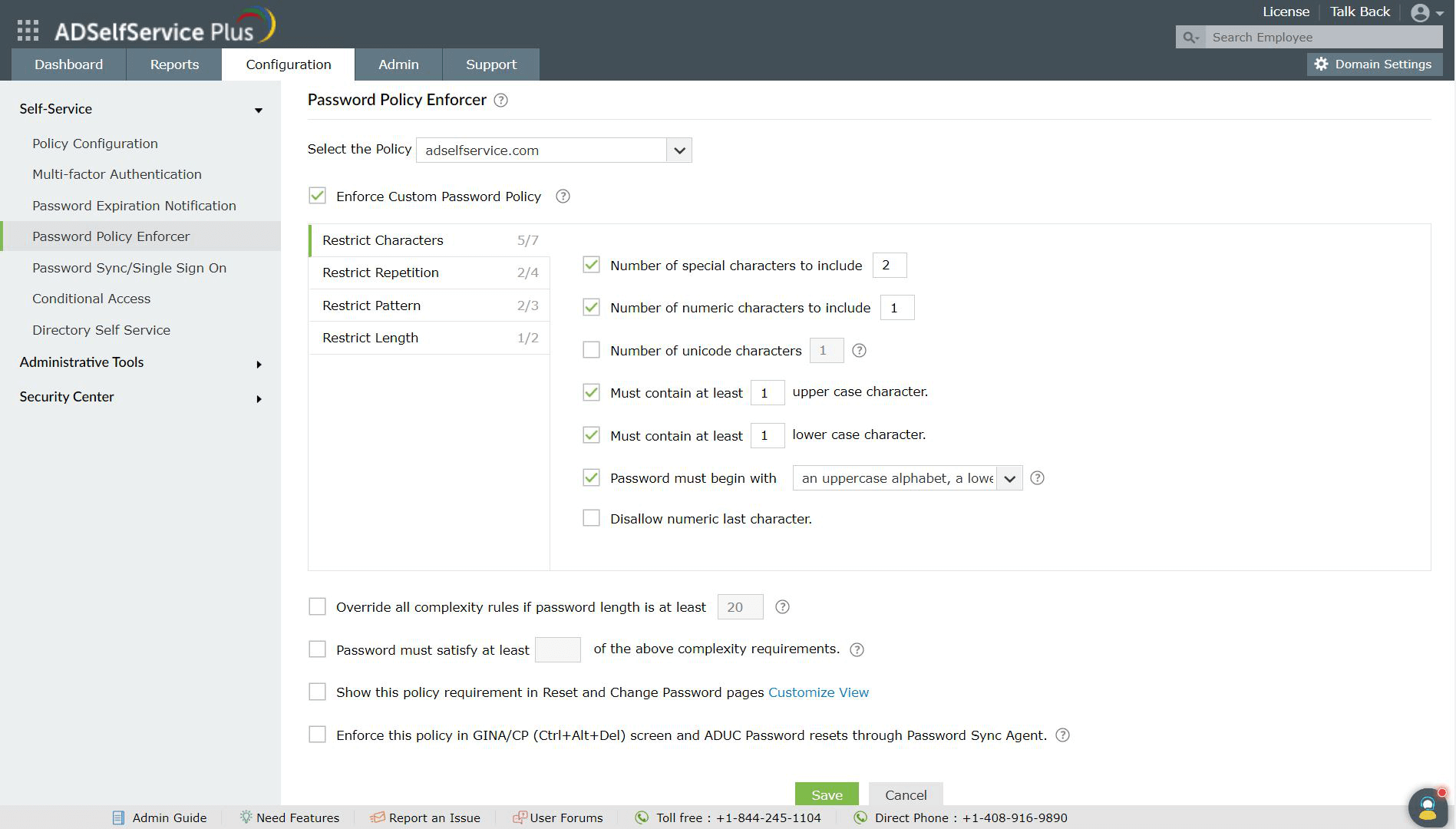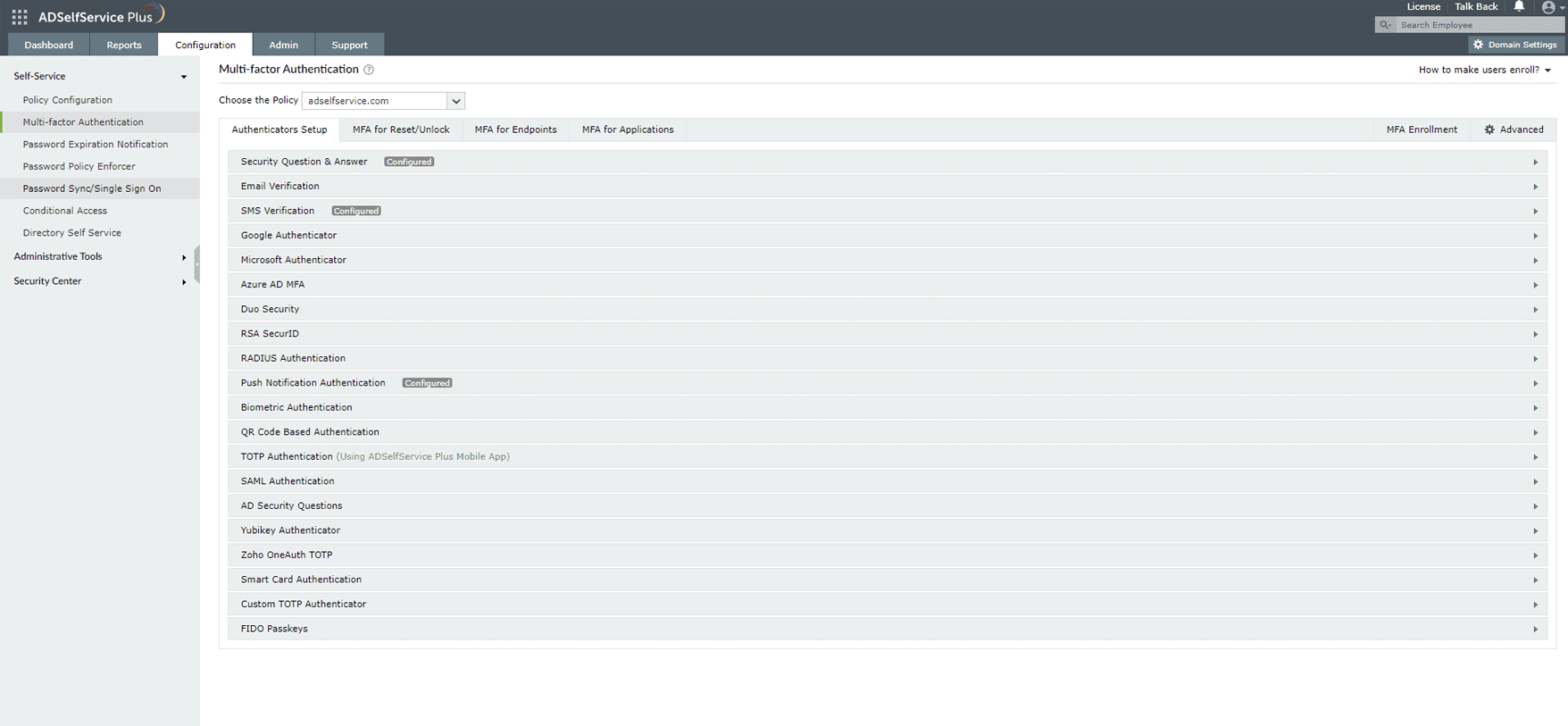At the end of 2004, five major credit card companies—namely American Express, Discover Financial Services, JCB International, MasterCard, and Visa Inc.—joined together to create the Payment Card Industry Data Security Standard (PCI DSS) in an attempt to curb data fraud in the finance sector. Any organization that wants to process, store, or transmit credit card data must ensure that they comply with the mandated PCI DSS password policy requirements.
To be PCI DSS compliant, organizations must enforce the password policy requirements mentioned in section 8 of the PCI DSS regulations. This section dealing with identity and access management has undergone considerable changes in 2022 based on the NIST 800-63B password guidelines. The following are the latest password policy requirements that the PCI DSS states:
These PCI DSS password requirements address password complexity and strength only on a basic level so that they can accommodate the variation in technology between companies. Apart from these standards, the PCI DSS also allows companies to implement relevant password requirements specified by the National Institute of Standards and Technology Special Publication (NIST) 800-63B.
ADSelfService Plus offers advanced password policy and MFA settings to ensure your company complies with the password requirements of the PCI DSS. You can create a custom password policy that meets all the PCI DSS requirements and enforce it for all or specific AD users based on their domain, OU, or group membership.
Satisfy the PCI DSS Requirement 8.2.3 by configuring the minimum password length and the inclusion of alpha-numeric characters in passwords.
Satisfy the PCI DSS Requirement 8.2.5 by restricting users from re-using any of their last four passwords during password creation.
Choose the minimum number of complexity requirements your users' passwords should satisfy as per your organization's security needs.

Satisfy the PCI DSS Requirement 8.2.3 by configuring the minimum password length and the inclusion of alpha-numeric characters in passwords.
Satisfy the PCI DSS Requirement 8.2.5 by restricting users from re-using any of their last four passwords during password creation.
Choose the minimum number of complexity requirements your users' passwords should satisfy as per your organization's security needs.
Satisfy the PCI DSS Requirement 8.3.2 by securing all endpoints in your network using MFA.
Choose from around 20 different authenticators to verify your users' identities.

Satisfy the PCI DSS Requirement 8.3.2 by securing all endpoints in your network using MFA.
Choose from around 20 different authenticators to verify your users' identities.
Your download is in progress and it will be completed in just a few seconds!
If you face any issues, download manually here
Free Active Directory users from attending lengthy help desk calls by allowing them to self-service their password resets/ account unlock tasks. Hassle-free password change for Active Directory users with ADSelfService Plus ‘Change Password’ console.
Get seamless one-click access to 100+ cloud applications. With enterprise single sign-on, users can access all their cloud applications with their Active Directory credentials. Thanks to ADSelfService Plus!
Intimate Active Directory users of their impending password/account expiry by mailing them these password/account expiry notifications.
Synchronize Windows Active Directory user password/account changes across multiple systems, automatically, including Office 365, G Suite, IBM iSeries and more.
Ensure strong user passwords that resist various hacking threats with ADSelfService Plus by enforcing Active Directory users to adhere to compliant passwords via displaying password complexity requirements.
Portal that lets Active Directory users update their latest information and a quick search facility to scout for information about peers by using search keys, like contact number, of the personality being searched.